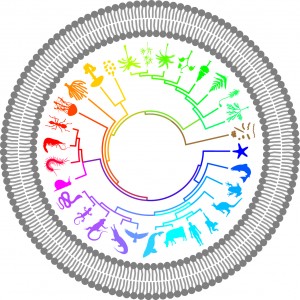 With the current data revolution, what are the tools we have to interpret the vast amounts of -omics data generated daily? Can we build a model to understand what is happening in a cell? In an Opinion article in BMC Biology, Michael Blinov and Ion Moraru present the case for logic-derived modeling to meet this challenge.
With the current data revolution, what are the tools we have to interpret the vast amounts of -omics data generated daily? Can we build a model to understand what is happening in a cell? In an Opinion article in BMC Biology, Michael Blinov and Ion Moraru present the case for logic-derived modeling to meet this challenge.
What would a cell biologist use logic modeling for? At the basic level, to offer a conceptual representation of causality links between components (proteins, genes – ‘nodes’) in a pathway, ultimately generating the data as an iconic network of relationships (‘edges’). A simple, single pathway is easy to understand but as more components are involved and are also players in different pathways, the interactions become more complex, and hence the need for modeling.
What are the problems faced when trying to model a dynamic cellular system? First, simple causal links described in logic between components may in fact not be so simple and be “on” or “off”, but are more complex, for example, needing to reflect a graded response or represent uncertainty. Second, most logic models have been based on a steady-state system but of course, what a cell biologist will wish to model is a dynamic system.
Blinov and Moraru discuss some of the solutions to these problems. Algorithms that use logic-based differential equations is one answer to reflect different time points, and they argue that logic modeling in the form of network inference (which aims to reverse-engineer the relationships between intracellular components) will help understanding large datasets where several parameters are measured. So logic modeling is coping with what a cell biologist is looking for. Blinov and Moraru describe recent examples of a “whole-cell” model of a prokaryotic cell and a new software – CellNOptR – which optimises cell signaling models based on prior knowledge networks.
Of course such logic models and graphic representation of -omics data cannot be fully complete or correct, or help understand what is happening at a functional level – hence they have occasionally been called the “ridiculome”. But together this will bring new avenues for experimental cell and molecular biologists to explore – both in terms of quantitating cellular function and making connections between vast amounts of data from the -omics revolution and knowledge from existing networks – extending the edges of understanding. It is this interdisciplinary future that BMC Biology wishes to embrace as we move into our 10th Birthday year in 2013.
Latest posts by Ann Le Good (see all)
- Embryonic transformations - 19th January 2015
- Questioning regeneration: answers from Alejandro Sánchez-Alvarado - 29th October 2014
- How do geckos climb? - 15th May 2014
Comments